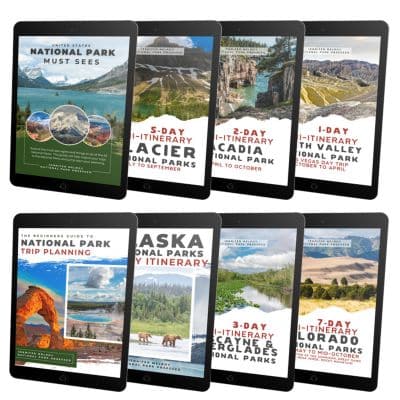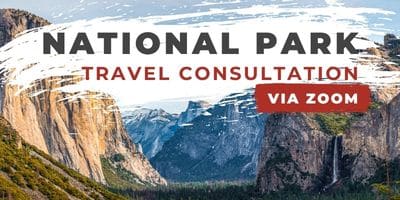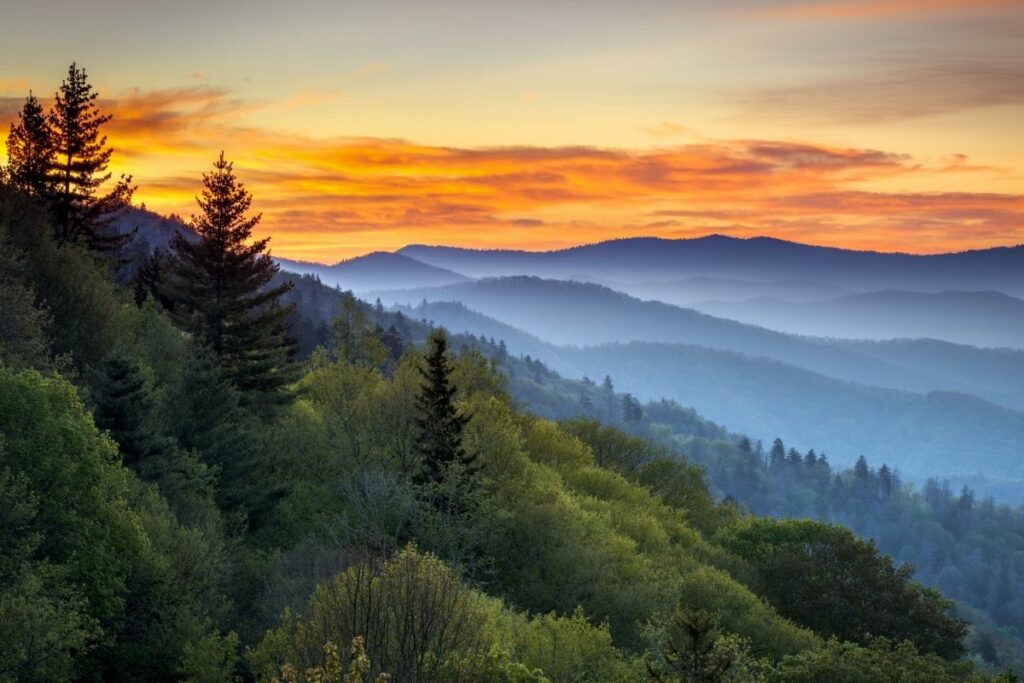
National Parks in Tennessee: Explore the 13 Tennessee National Parks (2024 Update)
- Jennifer Melroy
- Last Modified August 26, 2024
- First Published on August 30, 2021

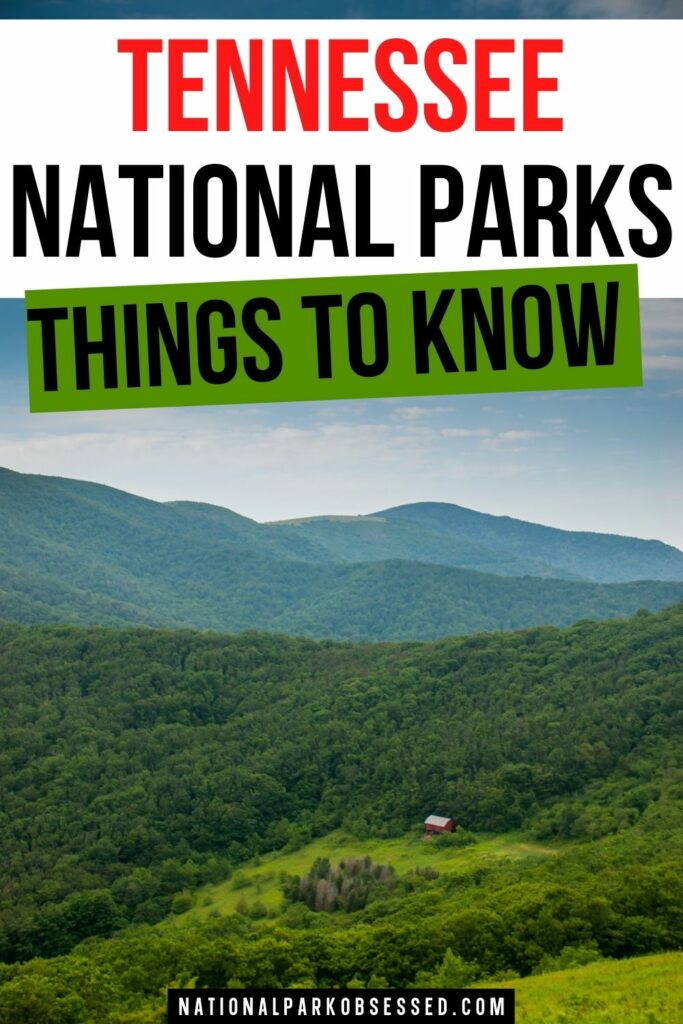

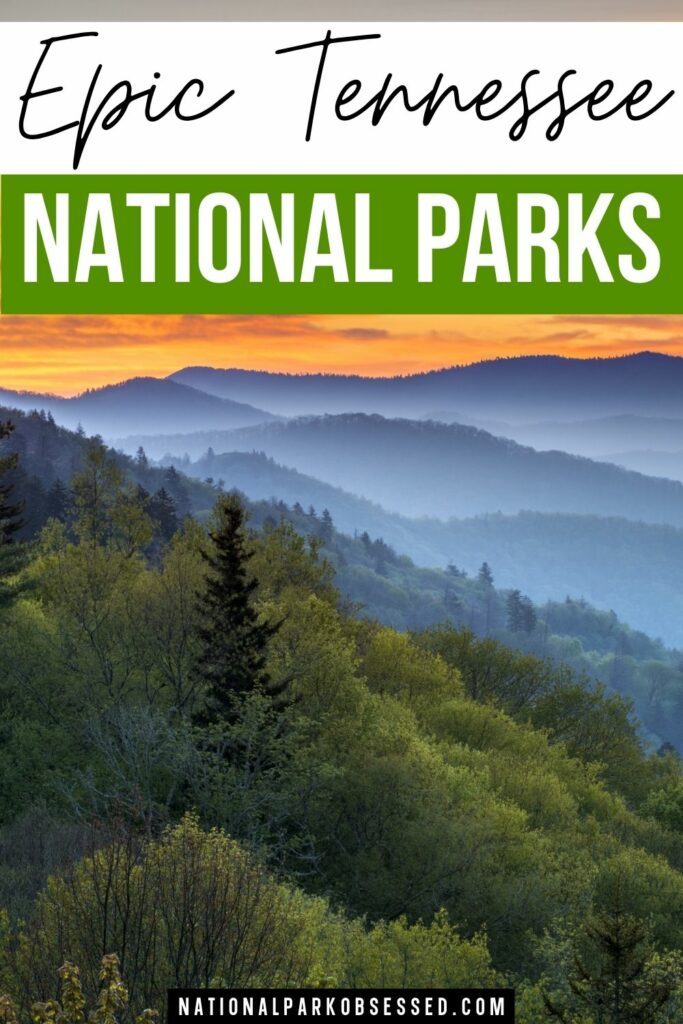
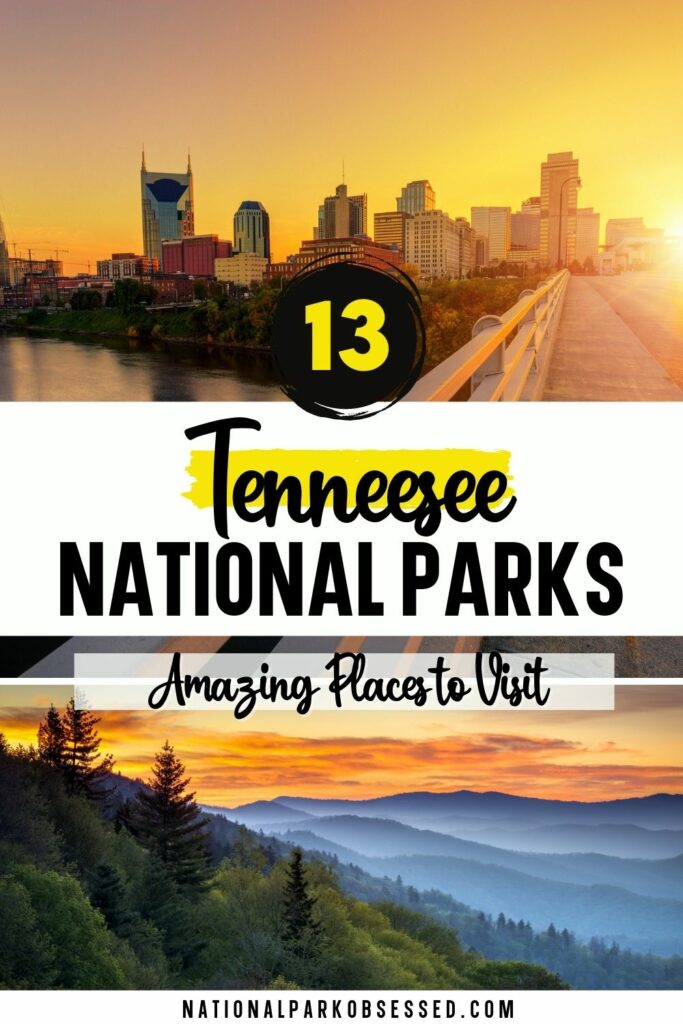
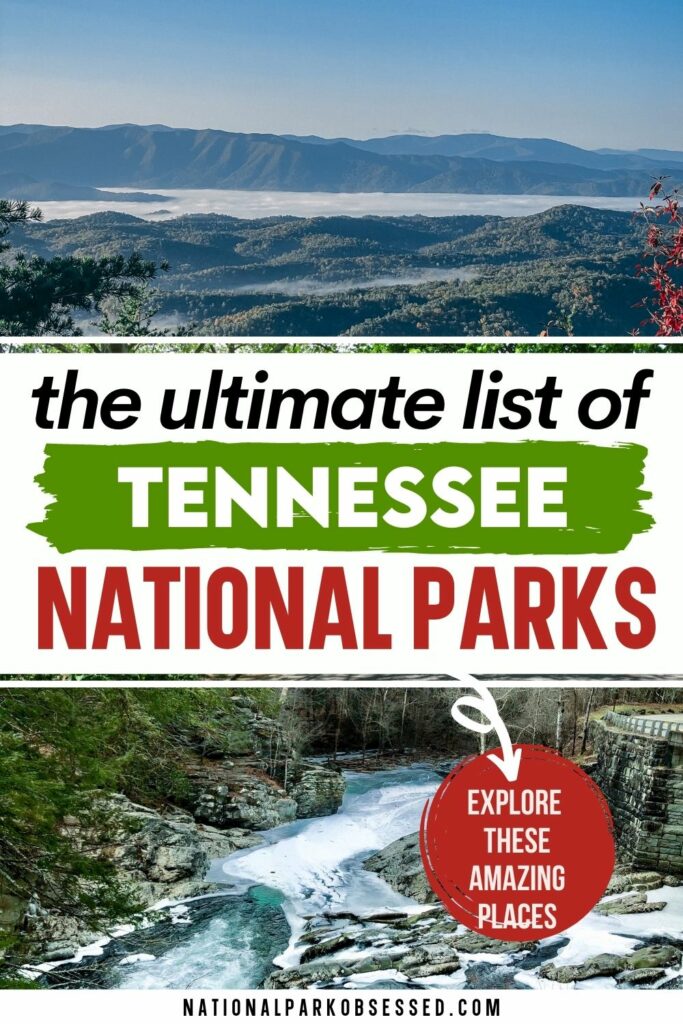

Post Summary: National Parks in Tennessee
Tennessee is historically the only state that is entirely recognized as a Heritage Area and for good reason. This Southeastern landlocked region is famous for being the music capital of the States. It is not only known for producing some of the best Country singers but has been an area deeply ingrained in America’s history and home of diverse flora and fauna. Visitors frequent this destination to discover more of what the region has to offer in terms of cultural, historical, and natural wonders.
Travelers come to learn more about Tennessee’s impact on the Civil War, the American Revolutionary War, previous presidents, Native American settlements, and even more. Adventure-seekers visit this heritage area to explore the wildlife and enjoy the different outdoor activities from rock climbing to whitewater rafting. Campers can also enjoy many choices for campgrounds to stay in and stargaze throughout the night. There is definitely something for everyone in the state full of Southern charm and this is a must-visit for your next trip.

This post may contain affiliate links, meaning if you book or buy something through one of these links, I may earn a small commission at no extra cost to you! Read the full disclosure policy here
Map of National Parks in Tennessee
Tennesee National Parks
Andrew Johnson National Historic Site
Located in Greeneville, Tennessee, this site commemorates the life of the 17th US President, Andrew Johnson. Johnson assumed his role after the late president, Abraham Lincoln was assassinated. Visitors can go through the different relevant locations of Johnson’s life to get a glimpse of his childhood and where the late president grew up.
On this site, you can find four historical points: two of Johnson’s homes, his tailor shop, and even his burial site. These areas can be found in the three units of the park. Namely, Andrew Johnson Visitor Complex, the Andrew Johnson Homestead, and the Andrew Johnson National Cemetery.
The Visitor Complex includes the museum and the tailor shop wherein visitors can learn more about the complexities of the life of Johnson. His home, the Andrew Johnson Homestead is a two-story Greek Revival that has been preserved to its former glory. The burial site of this president can be found in the Andrew Johnson National Cemetery, where a monument was also built to commemorate him.
This site was transferred to the care of the National Park Service on May 23, 1942.
Things to do: Guided Tours, Visit the Museum
How to get there: The address of the visitor center is 101 North College Street, Greeneville, Tennessee. By car, visitors take the I-81 route. The closest airport is the Tri-Cities Regional Airport.
Where to Stay: Accommodation is available around the area. In Greenville, there are many hotels, lodging, and inns.
Entrance Fee: Free
Official Website: Click Here
Map: Download
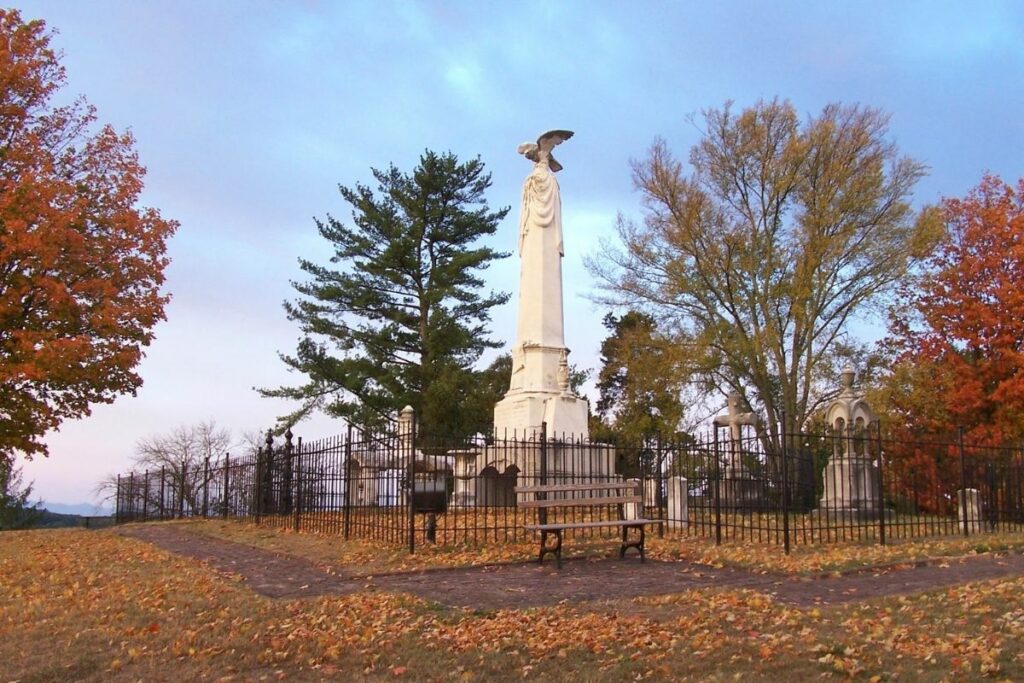
Appalachian National Scenic Trail
One of the most famous scenic trails of North America is the Appalachian Trail that runs over two thousand miles long. This public footpath is rich with amazing wildlife, scenic views, and a great hike of the mountains. In fact, it is the longest hiking-only trail in the world and included as one of the Triple Crown of Hiking. This trail passes through 14 states including Tennessee and some even consider the connections in Florida and Canada to still be included in the trail.
The idea was first thought of by forester, Benton MacKaye in his plan: “An Appalachian Trail, A Project in Regional Planning.” After many years of approval processes and construction, hikers now have over two thousand miles to enjoy with continuous improvements every year. Travelers can expect to see a plethora of wildlife in the area like black bears, deer, elks, moose, beavers, river otters, many bird species, and so much more. The trail also has an amazing variety of plants throughout each area. This would definitely be a nature lover’s paradise. Aside from the flora and fauna, travelers can enjoy breathtaking views of the mountains and enjoy what each nearby town has to offer.
Tennessee holds about 71 miles of the long trail just below the summit of Clingmans Dome in Great Smoky Mountains National Park. This trail was completed in 1937 and is now managed under the care of the National Park Service.
Things to do: Backpacking, Hiking, Sightseeing, Wildlife Viewing
How to get there: There are about 500 public roads that would lead to or intersect with the trail so accessing it by car will be fairly easy. By train, there is direct access to the trail from two stations: Harpers Ferry, WV, and Pawling, NY. There are also many airports that can take you to cities near the trail. For Tennessee, the closest airports are McGhee Tyson Airport and Tri-Cities Airport.
Where to Stay: There are many choices for accommodation nearby the trail from Georgia to Maine. Camping is available on the trail.
Entrance Fee: Mostly Free, but select trailheads in State or National Parks may have an entrance fee.
Official Website: Click Here
Map: Download
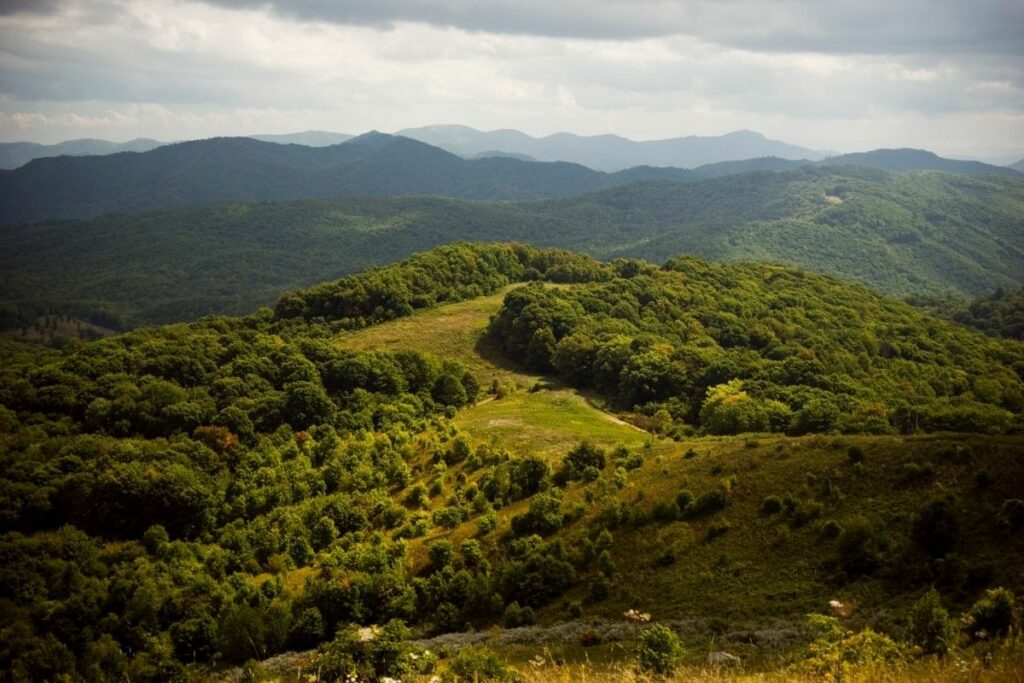
Big South Fork National River and Recreation Area
Big South Fork is a gorgeous and picturesque area protecting the free-flowing Big South Fork of the Cumberland River and its tributaries. The most impressive feature of the Cumberland Plateau is the river gorge that travelers come to see here in Big South Fork. Because of the flow of water in the area, through time, it created magnificent rock formations like natural arches and hoodoos. The area is also rich in flora and fauna, with many visitors enjoying fishing, birdwatching, and wildlife viewing in the area.
Aside from the amazing plethora of wildlife in and around the river, many relevant historical events touched these waters. Traces from important events like the time of Paleolithic Indians, mid-century coal mining, and even the Civil War can be found in the area.
Travelers can expect scenic views and many outdoor activities to try in the area. Aside from camping, Charit Creek Lodge offers accommodation in its wilderness lodge, which is only accessible through a foot trail.
Things to do: Hiking, Backpacking, Visit Historic Sites, Hiking, Visit Overlooks, Horseback Riding, Whitewater Rafting
How to get there: By car, visitors use Route I-75 or I-40 to reach any of the available campgrounds: Station Camp, Bandy Creek, Blue Heron, Alum Ford, or Bear Creek Horse Camp. The closest airport to the area is in Nashville, Tennessee.
Where to Stay: There is only one lodge available called the Charit Creek Lodge near the Station Camp Creek. Campgrounds are available for an overnight stay as well with amenities varying from shower areas to food storage. However, there are also a wide variety of hotel options in surrounding counties: Fentress, Morgan, Pickett, and Scott County.
Entrance Fee: Free
Official Website: Click Here
Map: Download
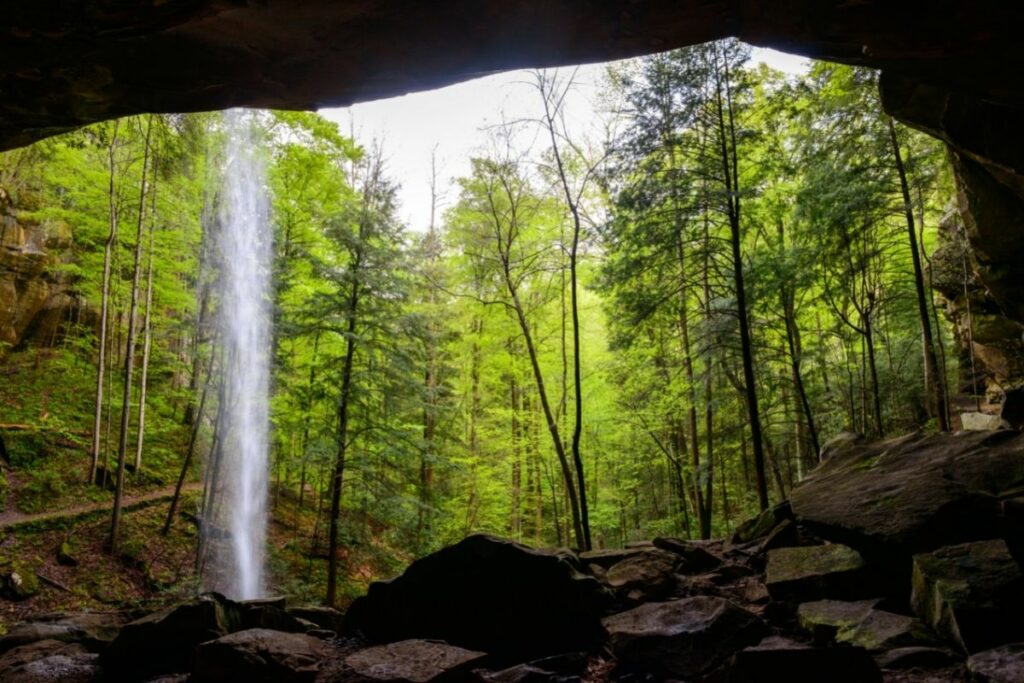
Chickamauga and Chattanooga National Military Park
This military park remembers two important events in the American Civil War: the Battle of Chickamauga and the Siege of Chattanooga. The military park is shared between areas in Tennessee and Georgia, which includes four areas: Chickamauga Battlefield, Missionary Ridge, Lookout Mountain Battlefield and Point Park, and Moccasin Bend.
In Tennessee, the Chattanooga campaign during the Civil War is what this site aims to remember. This campaign was a series of battles done in 1863 between the Union and the Confederacy. The sites preserved are the battlefields wherein the two sides of this historic event fought for control of Chattanooga, known as the “Gateway to the Deep South”. The Union was victorious and gained control of this city. Through the bravery of the Union troops, they were able to fight during this instrumental battle and significantly weakened the efforts of the Confederacy which became one of the key points of winning the whole Civil War.
In 1933, the National Park Service took over managing the battlefields.
Things to do: Hiking, Guided Tours, Visit The Ochs Museum, Indoor Exhibits in Visitor Centers, Bicycling, Horseback Riding, Rock Climbing, Paddling, Kayaking, Picnicking
How to get there: The nearest airport available is the Chattanooga Metropolitan Airport. From there, visitors can take Interstate 75 or Interstate 24 to reach the Chickamauga Battlefield. By car, you can take Interstate 24 to reach the Lookout Mountain Battlefield.
Where to Stay: There are many hotels, hostels, and other accommodations available around the area that is very close to the military base.
Entrance Fee: $10
Official Website: Click Here
Map: Download

Cumberland Gap National Historical Park
The Cumberland Gap is one of the earth’s greatest miracles as a natural mountain gateway stands proud in the middle of the South of the U.S. It spans three states: Kentucky, Virginia, and Tennessee.
The gap was originally three different major structural features: the Pine Mountain Thrust Sheet, the Middlesboro Syncline, and the Rocky Face Fault. After many years of erosion and natural changes, these features combined forming this large ridgeline. This passage was predominantly used by Native Americans to travel through the mountains long before European settlers discovered the Americas. This gap was paved by many American buffalo traversing the ridge due to its plentiful salt in the region. The name of this was given after the Battle of Culloden. It was named after Prince William, Duke of Cumberland, son of King George II of Great Britain along with many other areas in the American colonies being named after him.
Here, visitors can hike up the path or enjoy guided tours to discover the caves, and other formations in the area as well as learn more about its significance in American history.
Things to do: Hiking, Guided Tours of the Gap Cave and Hensley Settlement
How to get there: The nearest airports available from this park are located in Knoxville, Tennessee, or Lexington, Kentucky. By car, visitors can take Interstate 75 or 81 to reach Highway 25E and make their way to the park. There is no public transportation available in and around the park.
Where to Stay: Overnight accommodation is not available in the park but close communities offer many options. There are many hotels, hostels, and other accommodations available in Cumberland Gap, Tennessee, or Tazewell, Tennessee for visitors. The Wilderness Road Campground is also available for campers and backcountry camping is allowed but special permits.
Entrance Fee: Free
Official Website: Click Here
Map: Download

Fort Donelson National Battlefield
Fort Donelson National Battlefield remembers the great efforts of the Union troops to gain victory against the Confederacy back in the Civil War. This battlefield marks the place wherein Grant rallied his troops and created a pathway to victory for the Union.
After a bloodbath, Grant was able to end the battle with the Confederacy having no choice but to surrender. Through this historic battle, the Union was able to gain access to what was once the Confederacy’s territory in the South. After the fall of Fort Donelson, the Confederacy was forced to give up many of the Southern states which became important supply depots and integral areas for the Union. In 1867, a National Cemetery was established as the final resting place of these brave soldiers and sailors.
Visitors can opt to explore the different sites of the battle like the surrender house, the water batteries, and the Confederate fort.
Things to do: Guided Tours, Self-Guided Autotour, Hiking, Visit Historical Sites
How to get there: It is advised for visitors to begin their adventure in the main entrance located at 120 Fort Donelson Park Road, in Dover Tennessee, which can be accessed through US Highway 79. Nashville and Memphis Airports are the nearest available options by plane.
Where to Stay: Lodging is not available in the national park itself but many options for accommodation are available in Dover, Tennessee. There are two campgrounds near the battlefield as well. Namely, Land Between the Lakes National Recreation Area and Paris Landing State Park for overnight stay.
Entrance Fee: Free
Official Website: Click Here
Map: Download
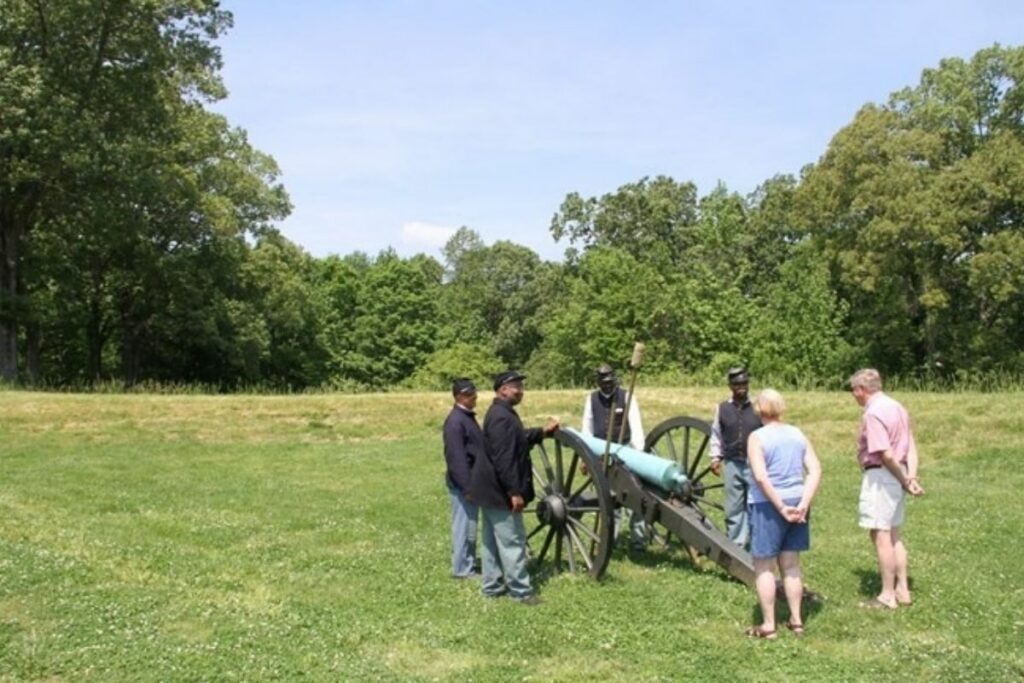
Great Smoky Mountains National Park
Great Smoky Mountains National Park is one of the most visited national parks in the country and it’s no surprise why. This national park is on the ridgeline of the Great Smoky Mountains and is within driving distance of 30% of the United States population. The park on the border of Tennesse and North Carolina. The Appalachian Trail also crosses through the center of the park welcoming all hikers traveling through the different states.
Once inside the park, visitors can enjoy a wide variety of outdoor activities like fishing, wildlife viewing, auto tours, waterfalls, hiking, and more. The park boasts scenic views of the different mountains and an impressive diverse variety of flora and fauna. Hikers can expect to spot different species of amphibians, reptiles, and birds. You can even see American black bears roam around the area.
The two main entrances in Tennessee are in Gatlinburg and Townsend. Because of the high influx of visitors each year, neighboring areas also have many available destinations for tourists like Dollywood, Ober Gatlinburg, and Ripley’s Aquarium of the Smokies for other ideas to include in your trip.
The park was officially dedicated by President Franklin D. Roosevelt in 1940, designated as a UNESCO World Heritage Site in 1983, and named an International Biosphere Reserve in 1988.
Things to do: Auto tours, Bicycling, Backpacking, Camping, Fishing, Hiking, Visit Historic Buildings, Horseback Riding, Picnicking, Visit Waterfalls, Wildlife Viewing
How to get there: There are two entrances in Tennessee, which are located in Gatlinburg and Townsend. The Gatlinburg entrance can be accessed through the highway US-441. To reach the Townsend entrance, please proceed to TN-73 and follow the road until the park. By plane, visitors can use McGhee-Tyson Airport then proceed to the Gatlinburg entrance.
Where to Stay: There is no lodging available inside the park but there are many options in the vicinity such as hotels, vacation rentals, and motels. Some towns nearby the park are Cosby/Newport, Gatlinburg, Pigeon Forge, Sevierville, and Townsend. Campgrounds are available on site for visitors. Backcountry camping is also allowed for visitors with a permit.
Entrance Fee: Free
Official Website: Click Here
Map: Download
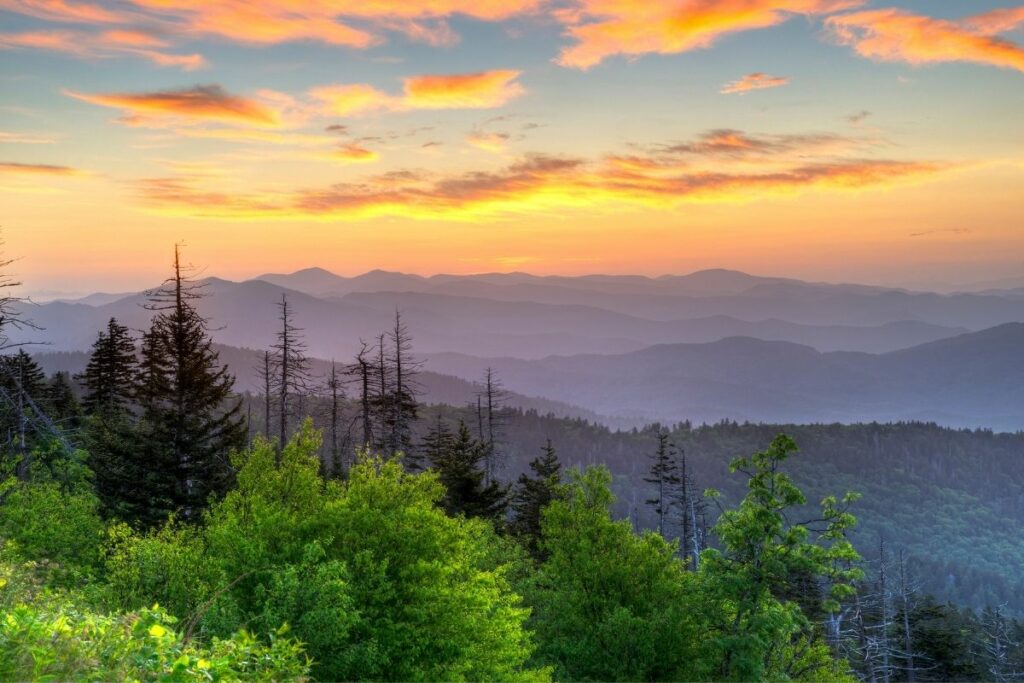
Manhattan Project National Historical Park
The Manhattan Project National Historical Park preserves the hidden but significant areas that were instrumental during the atomic age of the States. The park contains three units in Tennessee, New Mexico, and Washington. The Department of Energy owns and has been maintaining these areas along with other non-designated sites that could be attributed to the creation of the first atomic bomb.
In Oak Ridge, Tennessee, visitors can see the hidden complex that enriched uranium which is an integral part of the atomic bomb. Here, travelers can learn more about the science and history of the 20th century by visiting the museums and availing of the guided tours. The American Museum of Science and Energy provides bus tours that would take you along the significant areas of this endeavor like the X-10 Graphite Reactor, Buildings 9731 and 9204-3 at the Y-12 complex, and East Tennessee Technology Park.
This was designated under the joint care of the Department of Energy and National Park Service only in 2014.
Things to do: Enjoy Community Swimming Pool, Paddling in Haw Ridge Park, Visit Museum Exhibits, Picnicking, Guided Tours
How to get there: In Tennessee, the site of The Manhattan Project is in Oak Ridge, Tennessee. The visitor center is located inside the Children’s Museum of Oak Ridge. By car, visitors can take the I-75 or I-40 to reach Oak Ridge. The complete address of the museum is 461 W. Outer Dr., Oak Ridge, TN 37830. The nearest airports to Oak Ridge are Knoxville’s McGhee-Tyson Municipal Airport, Nashville’s International Airport, Lexington’s Bluegrass Airport, and Atlanta’s Hartsfield-Jackson International Airport.
Where to Stay: Wide array of accommodation options like hotels, motels, and inns are available in the city of Oak Ridge.
Entrance Fee: Free
Official Website: Click Here
Map: Download

Natchez Trace National Scenic Trail
One of the most famous hiking trails in North America is the Natchez Trace National Scenic Trail. This trail stretches about 444-miles through the states of Tennessee, Alabama, and Mississippi. Only segments of the old trail are still being used today but now it includes cross county and state roads. It was originally planned to be longer than the 444 miles but only a portion was built. Today, there are a total of five sections on the trail for visitors to enjoy at a leisurely pace. In Tennessee, the trail starts from Nashville and stretches all the way to Collinwood.
Visitors can opt to trek the trail to enjoy the different views, stop by neighboring towns, and discover the rich wildlife available in the area. In Tennessee, visitors can expect to go through sixteen segments from the north to the south area of the state each with different breathtaking views and more to explore. Some sites included are the Jackson Falls, Metal Ford, and Buffalo River, Fall Hollow Waterfall, and even some historical sites.
Things to do: Bicycling, Hiking, Camping, Horseback Riding
How to get there: There are several access points across the five segments of the trail. Visitors can enter each segment separately. Visitors can use Tennessee Highway 100 in the northernmost point in Nashville or other routes throughout the trail. In the south, cars can drive through Tennessee Highway 13 in Collinwood.
Where to Stay: There are many Tennessee bed and breakfasts, guest houses, cottages, cabins, and other accommodation options along or near the trail.
Entrance Fee: Free
Official Website: Click Here
Map: Download
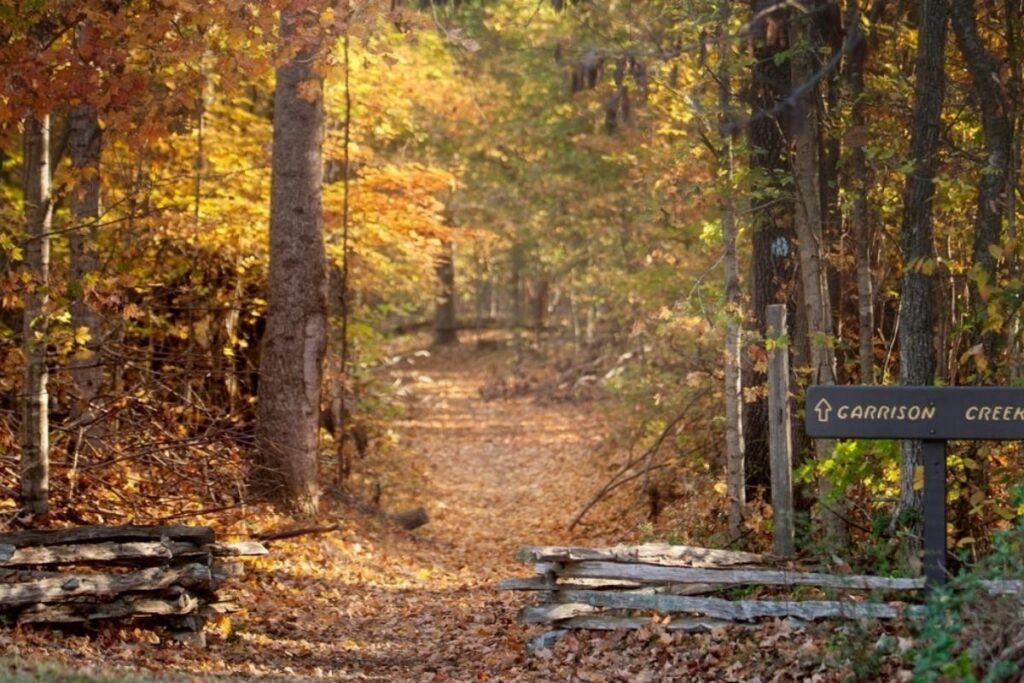
Natchez Trace Parkway
The Natchez Trace Parkway is a protected area that preserves the Old Natchez Trace. Its key features are in two areas: Natchez, Mississippi, and in Nashville, Tennessee.
This culturally relevant trail is where the Native Americans used to follow the original routes wildlife like bison and other game would take across the different land areas. After the Europeans arrived, the path became an easy-access communication pass between the Cumberland Plateau and other areas like the Mississippi River and the Gulf of Mexico. This also became integral in the American Revolutionary War.
In Tennessee, travelers can explore different highlights along the parkway. You can see the Meriwether Lewis Monument and Grave Site, Fall Hallow Trail, Tobacco Farm and Old Trace Drive, Trail to Jackson Falls, and Baker Bluff Overlook and Bridge at Birdsong Hollow at the different mileposts of the parkway.
Things to do: Bicycling, Hiking, Camping, Visit Waterfalls, Explore Historical Sites
How to get there: There are over 50 roads that lead to the different access points of the parkway. In Tennessee, visitors can use the northern terminus of the Parkway in the Southwest of Nashville, Tennessee. By car, travelers may follow I-40 to Nashville. The nearest airport is the Nashville International Airport.
Where to Stay: There is no commercial lodging available in the Parkway itself but the neighboring towns have many accommodation options to choose from. Visitors can search through the nearby towns like Lawrenceburg, Hohenwald, Columbia, Franklin, or Nashville. Camping is allowed and campgrounds access is free for visitors.
Entrance Fee: Free
Official Website: Click Here
Map: Download
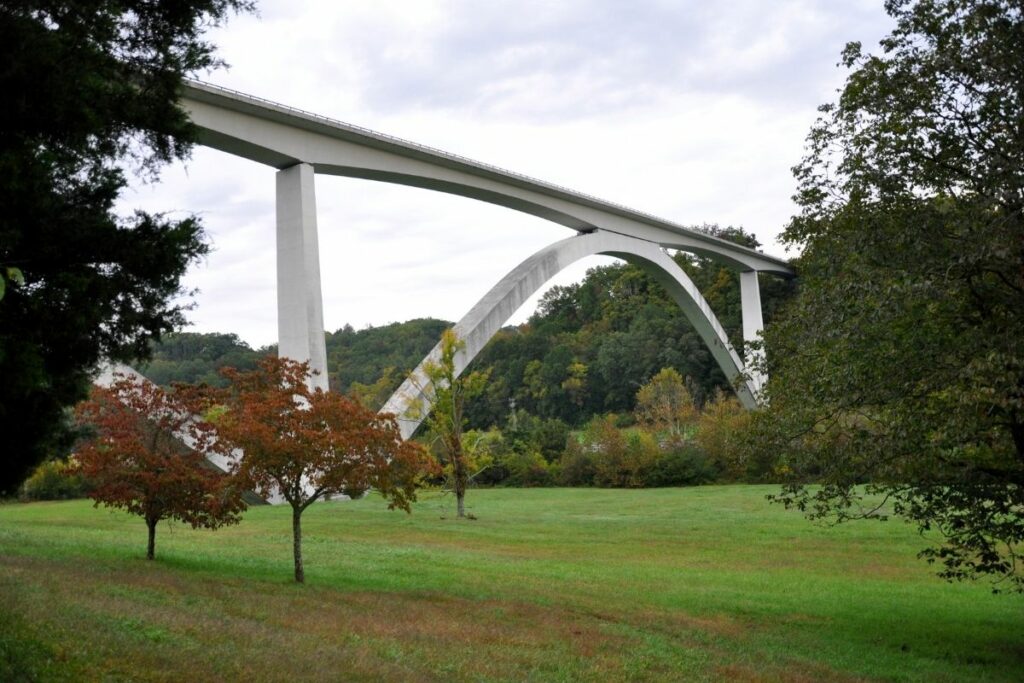
Obed Wild and Scenic River
Another key feature of the Cumberland Plateau is the Obed Wild and Scenic River, which are great destinations for whitewater enthusiasts and adventure seekers.
This river system is about 45 miles long and has been preserved through the test of time to maintain its original prowess when it was first discovered by European settlers in the 1700s. Travelers usually opt for adventures like whitewater rafting and rock climbing in this area. The water area has about 500-foot deep gorges where boaters can try their strength through rock climbing the sandstone bluffs along the river.
There are also other options for outdoor activities for adventure seekers. Kayaking and canoeing are available on site. Fishing enthusiasts can also enjoy the river with fish like bass, bluegill, catfish, and muskie, among others native to the area. Camping is also allowed in the campgrounds in the park for visitors to enjoy nature overnight.
Things to do: Kayaking, Canoeing, Rafting, Birdwatching, Bouldering, Hiking, Paddling, Rock Climbing, Go to Visitor Center
How to get there: The full address of the destination is 208 North Maiden Street, Wartburg, Tennessee. Drivers can use Route 27 and make their way to Kingston Street. Then, follow the signs to the Obed River. The nearest airport to Wartburg is Knoxville Airport and Nashville International Airport.
Where to Stay: Lodging is not available in the national park itself but there are options in Wartburg or Oak Ridge for visitors to stay overnight. The Rock Creek Campground is available for campers to stay for a fee.
Entrance Fee: Free
Official Website: Click Here
Map: Download
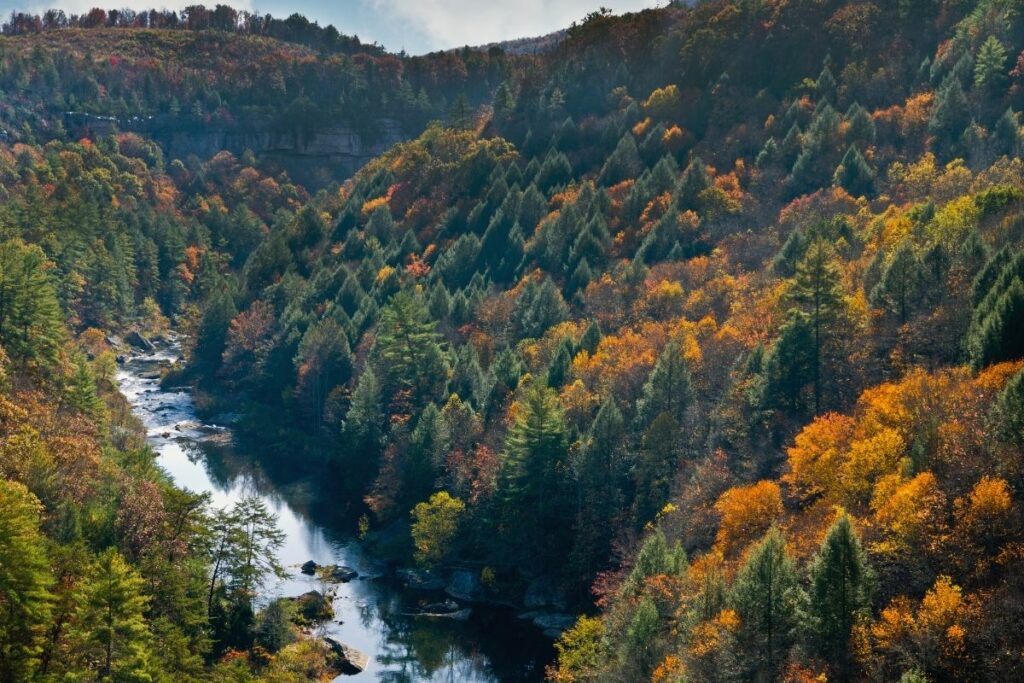
Shiloh National Military Park
Because Tennessee is one of the key states back in the American Civil War, many destinations are preserved to commemorate the historic events of the different battles that took place. One of these is the Shiloh National Military Park, which preserves the battlefields of Shiloh and Corinth.
The Battle of Shiloh in 1862 was a two-day feat between the forces of the Union and the troops of the Confederacy that began a six-month-long struggle for the railroad junction in Corinth. This two-day battle ended with almost 24,000 killed, injured, or missing. This enabled the Union to capture Corinth and help pave the way to getting control of Tennessee.
Visitors can take guided tours to learn more about this battle and the impact of the American Civil War through these sites.
The park was moved from the War Department to the care of the National Park Service in 1933.
Things to do: Visit Museums, Self-Guided Autotour, Hiking, Bicycling, Wildlife Viewing, Visit the Shiloh National Cemetery, Guided Tours
How to get there: The nearest airports are in Nashville or Memphis. By car, visitors can make their way through Highway 22 to the Shiloh Battlefield or Corinth Civil War Interpretive Center.
Where to Stay: Lodging is available in Hardin County and nearby towns like Crump or Savannah. Many types of accommodation are there for visitors to choose from. Bigger areas in Tennessee like Jackson and Nashville can offer even more accommodation for visitors.
Entrance Fee: Free
Official Website: Click Here
Map: Download
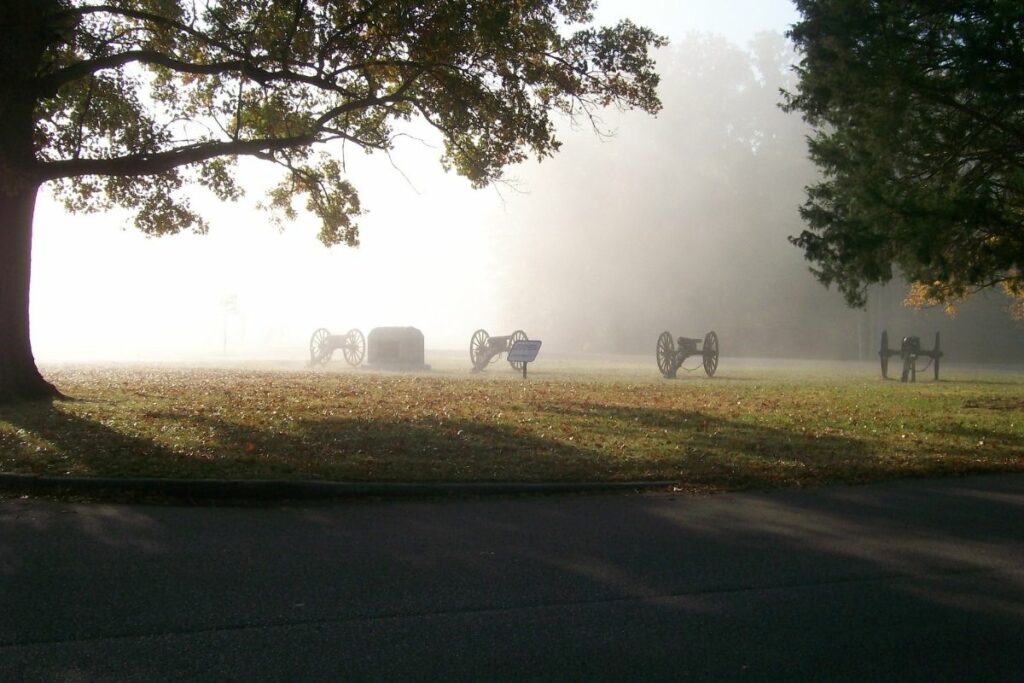
Stones River National Battlefield
The Stones River National Battlefield remembers another key event in the American Civil War, the Battle of Stones River. Deemed as one of the bloodiest battles of the war, this battle began back in December of 1862 as the culmination of the Stones River Campaign. This battle is known for having the highest casualties percentage on both sides of the war. With this victory, the Union was able to boost morale for the nation and acquire a great supply hub for their forces, which became instrumental throughout the whole war.
Today, part of this battlefield is commemorated in the Stones River National Battlefield. Visitors can expect to see the Hazen Brigade Monument and the National Cemetery where the fallen have found their final resting place. The battlefield also offers outdoor activities like hiking, jogging, and bicycling for visitors to enjoy aside from the historic education.
Things to do: Hiking, Jogging, Bicycling, Wildlife Viewing, Guided Tours, Explore Visitor Center, Visit the Fortress Rosecrans and Stones River National Cemetery
How to get there: The visitor center’s address is along Old Nashville Highway in Murfreesboro and the Main Park Entrance is along North Thompson Lane. Visitors can drive by car using Interstate 24 or Interstate 40 to reach Murfreesboro. By plane, visitors can opt to land in the Nashville International Airport and drive up to the visitor center or main entrance.
Where to Stay: There are no accommodation options inside the park itself. Camping is also not allowed in the park. A wide array of lodging options is available in downtown Murfreesboro.
Entrance Fee: Free
Official Website: Click Here
Map: Download
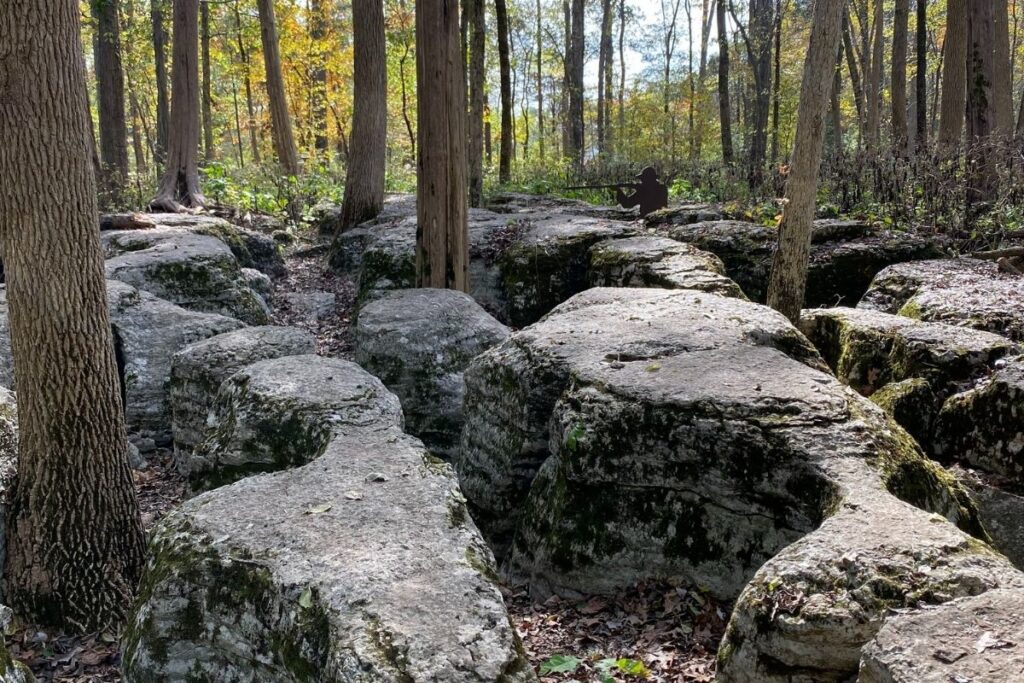
Associated Sites of Tenneessee
Overmountain Victory National Historic Trail
The Overmountain Victory National Historic Trail is the exact 330-mile pathway that was preserved from the historic march of colonial soldiers to fight off the British forces back in 1780 to commence the Battle of Kings Mountain. The Battle of Kings Mountain was one of the most instrumental battles between Patriots and Loyalists that occurred during the American Revolutionary War. The historic victory for the Patriots forced Cornwallis to retreat further South.
This trail stretches over four states: Virginia, Tennessee, North, and South Carolina. Travelers visit this destination to learn more about the historic events that took place in this state or to enjoy what nature has to offer. Visitors also opt to hike this trail and enjoy the wildlife and scenic views.
Things to do: Trekking, Sightseeing, Visit Historical Sites and Museums
How to get there: Stretching about 330 miles long, the trail crosses four states. In Tennessee, it consists of six smaller trail segments in Bluff City, Elizabethton, Sycamore Shoals State Historic Area, Town of Roan Mountain, Hampton Creek Cove State Natural Area Cherokee National Forest. Major airports available around the state are Memphis International Airport, Nashville International Airport, McGhee Tyson Airport, Chattanooga Metropolitan Airport.
Where to Stay: There is no available lodging along the trail itself but there are many options for visitors near the trail and neighboring towns. There are many hotels, hostels, and other types of overnight accommodation available in Elizabethton and near the other trail segments in Tennessee.
Entrance Fee: Mostly free, select sites along the trail may charge an entrance fee.
Official Website: Click Here
Map: Download
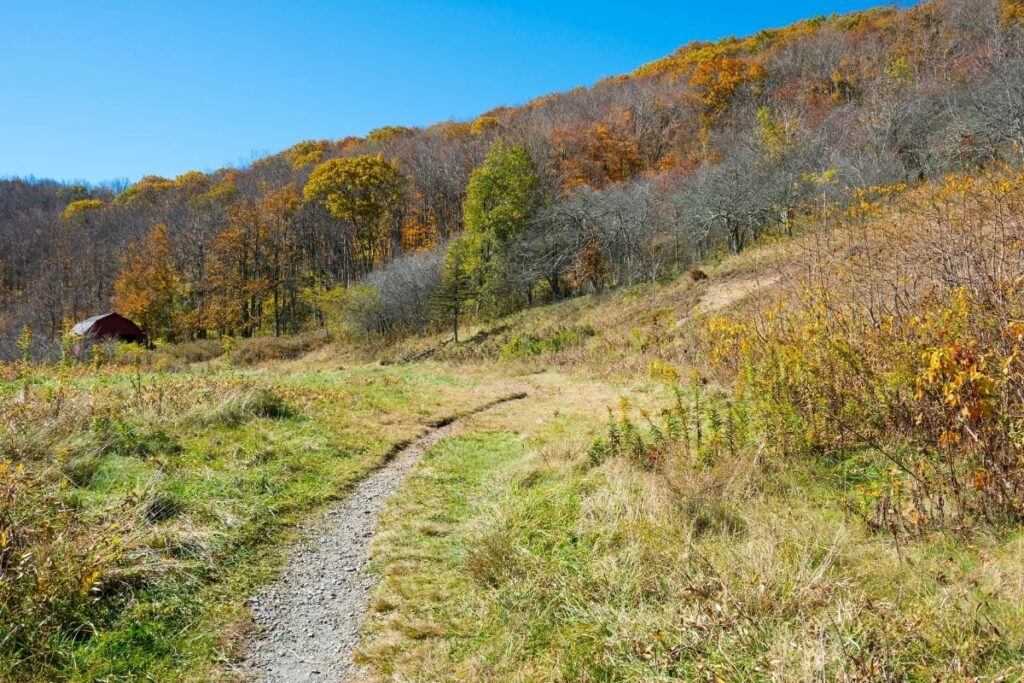
Tennessee Civil War National Heritage Area
The Tennessee Civil War National Heritage Area includes the whole state of Tennessee and aims to preserve the historical impact this area has on the freedom of the nation and the events during the American Civil War. This is the first and only Heritage Area that encompasses the whole state. The site includes eleven destinations for visitors to explore and learn more about the Civil War.
The goal of this heritage area is to commemorate and continue the legacy of all that have fought during the Civil War and the war’s impact on the country today. The American Civil War is known to be one of America’s greatest challenges wherein opposing members of the State: the Union and the Confederacy battled across the country. One of the key factors of the war was to abolish slavery, which was prominent during the time, especially in the Southern states.
The Tennessee Civil War National Heritage Area was officially designated under the care of the National Park Service in 1996.
Things to do: Explore Museums and Visitor Centers, Guided Tours, Visit Historical Sites
How to get there: Major airports available around the state are Memphis International Airport, Nashville International Airport, McGhee Tyson Airport, Chattanooga Metropolitan Airport. By car, visitors can drive around each of the highlighted historical sites in this heritage area in Tennessee.
Where to Stay: There are a plethora of options for overnight stay like hotels, hostels, inns, and even campgrounds around the different major cities and towns of Tennessee. There will be many choices from each of the nearby towns of the eleven historical sites included in the Heritage Area.
Entrance Fee: Mostly free, select sites along the trail may charge an entrance fee.
Official Website: Click Here
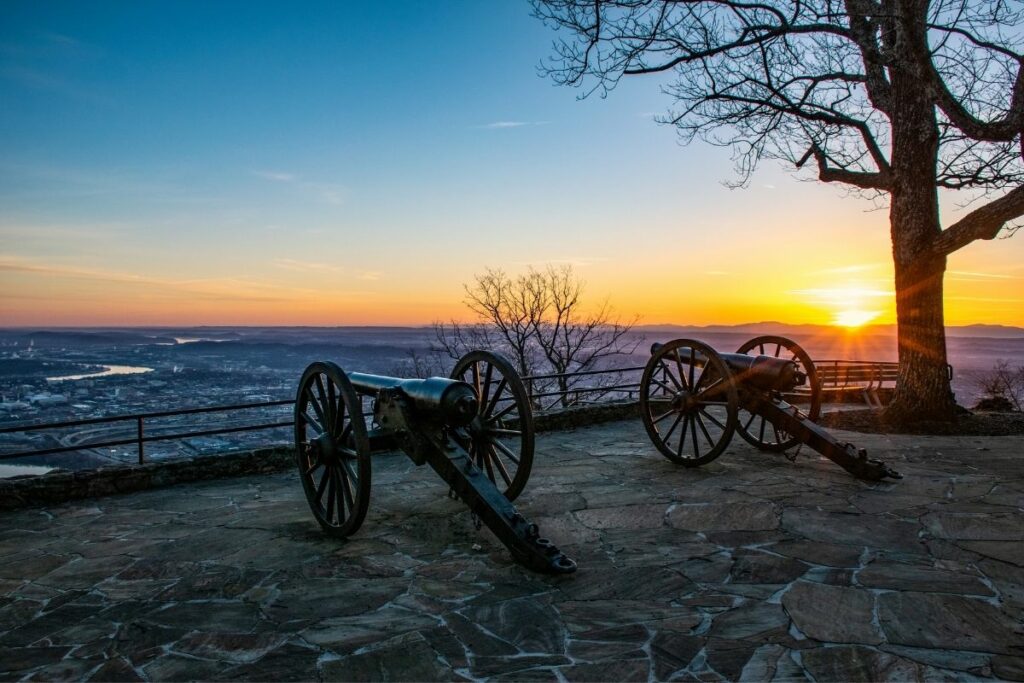
Trail of Tears National Historic Trail
The Trail of Tears National Historic Trail remembers a more solemn story of America’s history. Back in 1830, the Indian Removal Act was passed as the legislature by Congress. This required many various Native tribes to surrender their land in exchange for federal territory. The Cherokee people were forced to leave due to the Treaty of New Echota relocating them to a separate Indian Territory, which is now present-day Oklahoma.
This trail is the pathway that the Cherokee people were forced to take during the Indian removal process that commenced in May 1838. More than 16,000 of these people were forcibly evicted and moved around different campgrounds until they reached the Oklahoma settlement. Unfortunately, the journey there was devastating. Thousands of lives were lost during this forced relocation, which was mostly the old, the young, or people with disabilities. Despite their insurmountable struggle during the journey and even when first settling in Oklahoma, the Cherokee people proved their resilience and are now thriving as an independent tribe.
Today, visitors can walk the pathway and have a more leisurely time with a rich wildlife landscape and scenic views. Aside from these, visitors can also opt to enjoy other outdoor activities and adventures in the area.
Things to do: Hiking, Bicycling, Horseback Riding, Visit Historical Sites and Museums, Camping, Water Activities, Wildlife Viewing
How to get there: Visitors can reach this segment of the trail through airports in Knoxville, Nashville, and Memphis, Tennessee. This trail encompasses nine states and many different cities specifically in Tennessee. Visitors can reach access points in different areas like Nashville, Chattanooga, Murfreesboro among others.
Where to Stay: There are a plethora of options for overnight stay like hotels, hostels, inns, and even campgrounds around the different major cities and towns of Tennessee. Depending on which of the eleven highlighted historical sites you would like to keep near, there will be many options for you.
Entrance Fee: Mostly free, select sites along the trail may charge an entrance fee.
Official Website: Click Here
Map: Download
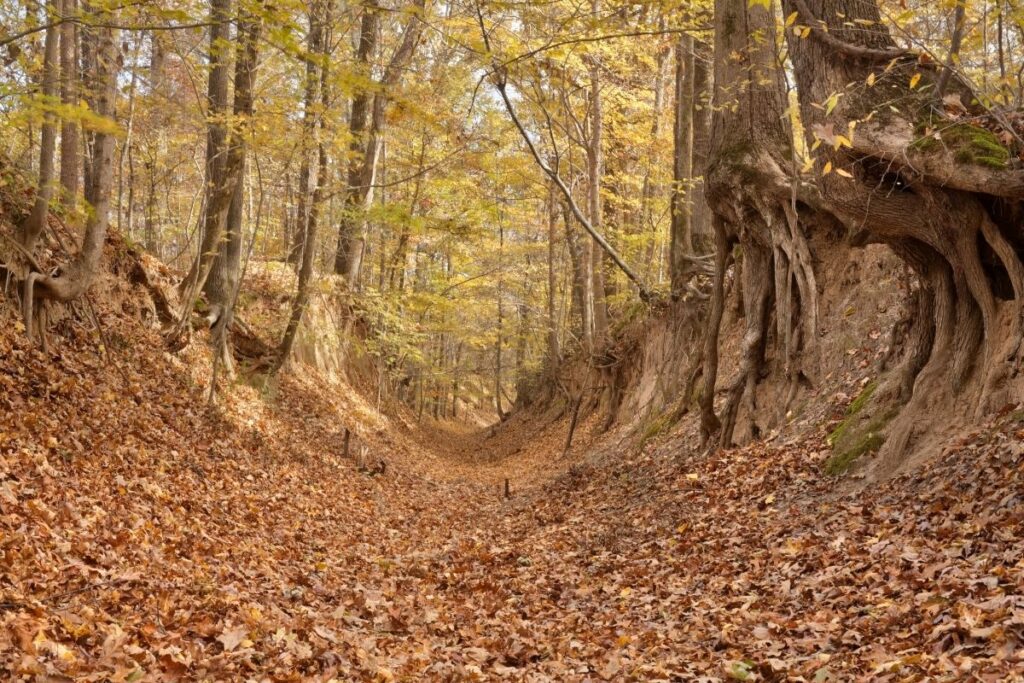
List of National Parks of Tennessee
There are 13 National Parks in Tennessee that received 9.7 million visitors in 2020 and generated over $970 million in tourism economic benefits. The majority of visitors (6.7 million) visited Great Smoky Mountains National Park. Great Smoky Mountains National Park is also a UNESCO World Heritage Site.
- Andrew Johnson National Historic Site
- Appalachian National Scenic Trail (CT, GA, MA, MD, ME, NC, NH, NJ, NY, PA, TN, VA, VT, WV)
- Big South Fork National River and Recreation Area (KY, TN)
- Chickamauga and Chattanooga National Military Park (GA, TN)
- Cumberland Gap National Historical Park (KY, TN, VA)
- Fort Donelson National Battlefield (KY, TN)
- Great Smoky Mountains National Park (NC, TN)
- Manhattan Project National Historical Park (NM, WA, TN)
- Natchez Trace National Scenic Trail (AL, MS, TN)
- Natchez Trace Parkway (AL, MS, TN)
- Obed Wild and Scenic River
- Shiloh National Military Park (TN, MS)
- Stones River National Battlefield
Affiliated Areas
- Overmountain Victory National Historic Trail (NC, SC, TN, VA)
- Tennessee Civil War National Heritage Area
- Trail of Tears National Historic Trail (AL, AR, GA, IL, KY, MO, NC, OK, TN)
Tennessee National Parks also provides support and management to 2.181 National Register of Historic Places Listings.
There are 31 National Historic Landmarks, 13 National Natural Landmarks, 426 Places recorded by the Heritage Documentation Program, and over 3.39 million objects in the Tennessee National Parks Museum Collections. There are 1,651 Archaeological Sites in the Tennessee National Parks.
Tennessee is home to 56 State Parks.
UNESCO World Heritage Sites of Tennessee
- Great Smoky Mountains National Park (NC, TN)
Tennessee’s Neighboring States
Planning to visit a few of the National Parks in Ohio and wandering about what national parks are in neighboring states. Here are the list of National Parks in surrounding states.
- Alabama National Parks – Alabama has 9 NPS units.
- Arkansas National Parks – Arkansas is home to Hot Springs National Park and 6 other units
- Gerogia National Parks – Georgia has 11 NPS units
- Kentucky National Parks – Kentucky has Mammoth Cave National Park and 6 other units.
- Mississippi National Parks – Mississippi has 9 NPS units.
- Missouri National Parks – Missouri is home to Gateway Arch National
ParkMemorial and 7 other units - North Carolina National Parks – North Carolina shares Great Smoky Mountains National Park with Tennessee and 9 other units.
- Virginia National Parks – Virginia is home to Shenandoah National Park and 21 other units.
Final Thoughts of the National Parks of Tennessee
I hope this guide to the National Parks of Tennessee is helpful as you plan to explore these amazing National Parks.
Pin for Later: National Parks in Tennessee: Explore the 13 Tennessee National Parks (2021 Update)

Jennifer Melroy
Hi, I'm Jennifer!

Welcome to the wonderful world of National Parks. I'm here to help you plan your NEXT amazing adventure through the United States National Parks and beyond. I want the national parks to be accessible to all.
I live in Tennessee, and when I'm home, you can find me hiking in the Smokies and the Cumberland Plateau.
58/63 National Parks
250+/423 National Park Units
Want to know more? Start Here.
ACKNOWLEDGEMENT OF LAND
On this site, we promote travel to the United States and beyond that are the traditional lands of Indigenous and First Nations peoples.
With respect, I make a formal land acknowledgment, extending my appreciation and respect to these lands’ past and present people.
To learn more about the people who call these lands home, I invite you to explore Native Land.
DISCLAIMER
National Park Obsessed assumes no responsibility or liability for any errors or omissions in the content of this site (NationalParkObsessed.com). The information contained in this site is provided with no guarantees of completeness, accuracy, usefulness or timeliness. You are encouraged to conduct your own due diligence before acting on the information provided on this site and should not rely on the opinions expressed here.
There is an inherent risk in all outdoor recreation activities, the reader assumes all responsibility for their own personal safety.
DISCLOSURE
We are a participant in the Amazon Services LLC Associates Program, an affiliate program designed to provide a means for us to earn fees by linking to Amazon.com and affiliated sites.
Privacy Policy • About Us • Contact
Select stock photography provided depositphotos
Copyright ©2023 National Park Obsessed, LLC
Privacy Overview
Last Updated on 26 Aug 2024 by Jennifer Melroy

